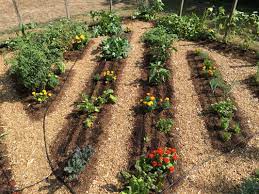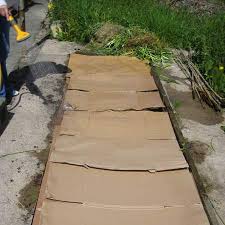In Ground Gardening

In ground gardening is just that, growing food directly in the ground! But you can’t grow in just any soil. Did you know soil has its own ecosystem? Without a good, living ecosystem, your plants won’t produce to their highest abilities. There are many methods you can practice to improve your existing soil without having to haul in a bunch of soil and compost. However, aged compost is always a good thing to add to your soil. It adds so many vitamins and minerals your plants need. But first, Do your research. Yes, you’ll probably kill a few plants, but if you don’t learn about what your plants need from the soil, you’re likely to kill them all!! In-Ground gardening is absolutely something that you can do! For more gardening methods, click here!

Cultivating Your Land
Cultivation is basically the practices you put in place, to build up your soil structure. Cultivating involves breaking down soil components and loosening the materials in the garden. It’s the act of digging into, or cutting up, an existing soil bed to better prepare it for planting. Cultivation is super important for your soil.
When do you cultivate the soil?
Every gardener, or farmer, does this at different times, and for different reasons. Usually done in early spring, before crops will be planted. Remember that with each plant you grow, it will take nutrients from the soil. It is important to add back in some nutrients into that soil, for the health of your new plants! If you do nothing to improve your current soil, nature will take a toll on the elements the soil, causing it to dry out and not hold much, or any, oil or moisture, preventing adequate nutrient absorption. Your plants need many things, or elements, to grow; Healthy soil, water, and air are just a few very important things.
Tilling
So, What does tilling have to do with land cultivation? Tilling is the act of turning or loosening the soil to improve penetration of water, nutrients, and air while removing weeds. Tilling the land is a great first step to building up the overall composition of your soil. Avoid tilling in the fall if you can mulch instead. Pull out spent plants and compost them, and then scuff up the surface with a hoe to kill weeds. Mulch through winter, and save actual cultivation for spring.

How do I till and what do I use to till with? Since “tilling” is basically the upturning and mixing of soil. So you can use a Hoe for manually lifting the soil. An electric or gas powered tiller is a more expensive, and more effective way of tilling the land. If you have a large garden space to till, using a hoe, and manually turning the soil will take a significantly longer time than an electric or gas powered tiller would. You can also rent a tiller in various sizes, and pay per day. Usually through Black Cat or John Deer, or a company like those. Check out a few of my garden cultivation recommendations.
No Till Method
Let’s face it, tilling is alot of work, and in some cases, it isn’t necessary. Implementing the “No Till” Method reduces soil erosion, increases soil biological activity and increases soil organic matter. What you do is going to add to your current soil structure as the layers you add decompose and settle.
Cardboard is a great, biodegradable option to use as your base layer. Lay 2-5 layers of carboard over your garden bed area. The cardboard is going to be your weed barrier. Until it breaks down, it is going to help keep those weeds at bay. Keep your cardboard moist until you’re ready to add your second layer. Your second layer can be mulch or compost/soil. I like to add 6-8 inches of mulch of the cardboard for the walkways of the garden, then soil where my “beds” are going to be, where I will plant my seeds, or transplant seedlings. Overtime, the layers are going to break down and would benefit from additional layers. Each season, layer on the mulch, and the soil to continue adding to your garden space.

In-Ground Gardening is entirely possible and encourage you to get out there, get dirty, and grow something that you enjoy! For more on gardening, click here!
Visit us on YouTube, Pinterest, Instagram, and Facebook.
